- Canton Champion Fibre Company Canton Champion Fibre Company (2308)
- Cherokee Traditions Cherokee Traditions (291)
- Civil War in Southern Appalachia Civil War in Southern Appalachia (165)
- Craft Revival Craft Revival (1942)
- George Masa Collection George Masa Collection (137)
- Great Smoky Mountains - A Park for America Great Smoky Mountains - A Park for America (2900)
- Highlights from Western Carolina University Highlights from Western Carolina University (422)
- Horace Kephart Horace Kephart (941)
- Journeys Through Jackson Journeys Through Jackson (159)
- LGBTQIA+ Archive of Jackson County LGBTQIA+ Archive of Jackson County (85)
- Oral Histories of Western North Carolina Oral Histories of Western North Carolina (314)
- Picturing Appalachia Picturing Appalachia (6797)
- Stories of Mountain Folk Stories of Mountain Folk (413)
- Travel Western North Carolina Travel Western North Carolina (153)
- Western Carolina University Fine Art Museum Vitreograph Collection Western Carolina University Fine Art Museum Vitreograph Collection (129)
- Western Carolina University Herbarium Western Carolina University Herbarium (92)
- Western Carolina University: Making Memories Western Carolina University: Making Memories (738)
- Western Carolina University Publications Western Carolina University Publications (2491)
- Western Carolina University Restricted Electronic Theses and Dissertations Western Carolina University Restricted Electronic Theses and Dissertations (146)
- Western North Carolina Regional Maps Western North Carolina Regional Maps (71)
- World War II in Southern Appalachia World War II in Southern Appalachia (131)
- Faces of Asheville Faces of Asheville (342)
- Forestry in Western North Carolina Forestry in Western North Carolina (1937)
- Grove Park Inn Photograph Collection Grove Park Inn Photograph Collection (355)
- Isaiah Rice Photograph Collection Isaiah Rice Photograph Collection (150)
- Morse Family Chimney Rock Park Collection Morse Family Chimney Rock Park Collection (56)
- Picturing Asheville and Western North Carolina Picturing Asheville and Western North Carolina (4964)
- Allanstand Cottage Industries Allanstand Cottage Industries (62)
- Appalachian National Park Association Appalachian National Park Association (53)
- Bennett, Kelly, 1890-1974 Bennett, Kelly, 1890-1974 (1463)
- Berry, Walter Berry, Walter (76)
- Brasstown Carvers Brasstown Carvers (40)
- Carver, George Washington, 1864?-1943 Carver, George Washington, 1864?-1943 (26)
- Cathey, Joseph, 1803-1874 Cathey, Joseph, 1803-1874 (1)
- Champion Fibre Company Champion Fibre Company (233)
- Champion Paper and Fibre Company Champion Paper and Fibre Company (297)
- Cherokee Indian Fair Association Cherokee Indian Fair Association (16)
- Cherokee Language Program Cherokee Language Program (22)
- Crowe, Amanda Crowe, Amanda (40)
- Edmonston, Thomas Benton, 1842-1907 Edmonston, Thomas Benton, 1842-1907 (7)
- Ensley, A. L. (Abraham Lincoln), 1865-1948 Ensley, A. L. (Abraham Lincoln), 1865-1948 (275)
- Fromer, Irving Rhodes, 1913-1994 Fromer, Irving Rhodes, 1913-1994 (70)
- George Butz (BFS 1907) George Butz (BFS 1907) (46)
- Goodrich, Frances Louisa Goodrich, Frances Louisa (120)
- Grant, George Alexander, 1891-1964 Grant, George Alexander, 1891-1964 (96)
- Heard, Marian Gladys Heard, Marian Gladys (60)
- Kephart, Calvin, 1883-1969 Kephart, Calvin, 1883-1969 (15)
- Kephart, Horace, 1862-1931 Kephart, Horace, 1862-1931 (313)
- Kephart, Laura, 1862-1954 Kephart, Laura, 1862-1954 (39)
- Laney, Gideon Thomas, 1889-1976 Laney, Gideon Thomas, 1889-1976 (439)
- Masa, George, 1881-1933 Masa, George, 1881-1933 (61)
- McElhinney, William Julian, 1896-1953 McElhinney, William Julian, 1896-1953 (44)
- Niggli, Josephina, 1910-1983 Niggli, Josephina, 1910-1983 (10)
- North Carolina Park Commission North Carolina Park Commission (105)
- Osborne, Kezia Stradley Osborne, Kezia Stradley (9)
- Owens, Samuel Robert, 1918-1995 Owens, Samuel Robert, 1918-1995 (11)
- Penland Weavers and Potters Penland Weavers and Potters (36)
- Roberts, Vivienne Roberts, Vivienne (15)
- Roth, Albert, 1890-1974 Roth, Albert, 1890-1974 (142)
- Schenck, Carl Alwin, 1868-1955 Schenck, Carl Alwin, 1868-1955 (1)
- Sherrill's Photography Studio Sherrill's Photography Studio (2565)
- Southern Highland Handicraft Guild Southern Highland Handicraft Guild (127)
- Southern Highlanders, Inc. Southern Highlanders, Inc. (71)
- Stalcup, Jesse Bryson Stalcup, Jesse Bryson (46)
- Stearns, I. K. Stearns, I. K. (213)
- Thompson, James Edward, 1880-1976 Thompson, James Edward, 1880-1976 (226)
- United States. Indian Arts and Crafts Board United States. Indian Arts and Crafts Board (130)
- USFS USFS (683)
- Vance, Zebulon Baird, 1830-1894 Vance, Zebulon Baird, 1830-1894 (1)
- Weaver, Zebulon, 1872-1948 Weaver, Zebulon, 1872-1948 (58)
- Western Carolina College Western Carolina College (230)
- Western Carolina Teachers College Western Carolina Teachers College (282)
- Western Carolina University Western Carolina University (2008)
- Western Carolina University. Mountain Heritage Center Western Carolina University. Mountain Heritage Center (18)
- Whitman, Walt, 1819-1892 Whitman, Walt, 1819-1892 (10)
- Wilburn, Hiram Coleman, 1880-1967 Wilburn, Hiram Coleman, 1880-1967 (73)
- Williams, Isadora Williams, Isadora (3)
- Cain, Doreyl Ammons Cain, Doreyl Ammons (0)
- Crittenden, Lorraine Crittenden, Lorraine (0)
- Rhodes, Judy Rhodes, Judy (0)
- Smith, Edward Clark Smith, Edward Clark (0)
- 1700s 1700s (4)
- 1800s 1800s (36)
- 1810s 1810s (2)
- 1820s 1820s (3)
- 1830s 1830s (5)
- 1840s 1840s (5)
- 1850s 1850s (26)
- 1860s 1860s (188)
- 1870s 1870s (28)
- 1880s 1880s (114)
- 1890s 1890s (342)
- 1900s 1900s (1394)
- 1910s 1910s (1002)
- 1920s 1920s (2719)
- 1930s 1930s (4525)
- 1940s 1940s (2400)
- 1950s 1950s (1820)
- 1960s 1960s (1225)
- 1970s 1970s (1011)
- 1980s 1980s (661)
- 1990s 1990s (532)
- 2000s 2000s (469)
- 2010s 2010s (309)
- 2020s 2020s (66)
- 1600s 1600s (0)
- Appalachian Region, Southern Appalachian Region, Southern (2940)
- Asheville (N.C.) Asheville (N.C.) (1944)
- Avery County (N.C.) Avery County (N.C.) (26)
- Blount County (Tenn.) Blount County (Tenn.) (195)
- Buncombe County (N.C.) Buncombe County (N.C.) (1680)
- Cherokee County (N.C.) Cherokee County (N.C.) (283)
- Clay County (N.C.) Clay County (N.C.) (556)
- Graham County (N.C.) Graham County (N.C.) (238)
- Great Smoky Mountains National Park (N.C. and Tenn.) Great Smoky Mountains National Park (N.C. and Tenn.) (525)
- Haywood County (N.C.) Haywood County (N.C.) (3571)
- Henderson County (N.C.) Henderson County (N.C.) (70)
- Jackson County (N.C.) Jackson County (N.C.) (4919)
- Knox County (Tenn.) Knox County (Tenn.) (35)
- Knoxville (Tenn.) Knoxville (Tenn.) (13)
- Lake Santeetlah (N.C.) Lake Santeetlah (N.C.) (10)
- Macon County (N.C.) Macon County (N.C.) (421)
- Madison County (N.C.) Madison County (N.C.) (216)
- McDowell County (N.C.) McDowell County (N.C.) (39)
- Mitchell County (N.C.) Mitchell County (N.C.) (135)
- Polk County (N.C.) Polk County (N.C.) (35)
- Qualla Boundary Qualla Boundary (982)
- Rutherford County (N.C.) Rutherford County (N.C.) (78)
- Swain County (N.C.) Swain County (N.C.) (2185)
- Transylvania County (N.C.) Transylvania County (N.C.) (270)
- Watauga County (N.C.) Watauga County (N.C.) (12)
- Waynesville (N.C.) Waynesville (N.C.) (86)
- Yancey County (N.C.) Yancey County (N.C.) (72)
- aerial photographs Aerial Photographs (3)
- aerial views Aerial Views (60)
- albums (books) Albums (books) (4)
- articles Articles (1)
- artifacts (object genre) Artifacts (object Genre) (228)
- bibliographies Bibliographies (1)
- biography (general genre) Biography (general Genre) (2)
- cards (information artifacts) Cards (information Artifacts) (38)
- clippings (information artifacts) Clippings (information Artifacts) (191)
- copybooks (instructional materials) Copybooks (instructional Materials) (3)
- crafts (art genres) Crafts (art Genres) (622)
- depictions (visual works) Depictions (visual Works) (21)
- design drawings Design Drawings (1)
- drawings (visual works) Drawings (visual Works) (185)
- envelopes Envelopes (73)
- exhibitions (events) Exhibitions (events) (1)
- facsimiles (reproductions) Facsimiles (reproductions) (1)
- fiction (general genre) Fiction (general Genre) (4)
- financial records Financial Records (12)
- fliers (printed matter) Fliers (printed Matter) (67)
- glass plate negatives Glass Plate Negatives (381)
- guidebooks Guidebooks (2)
- internegatives Internegatives (10)
- interviews Interviews (815)
- land surveys Land Surveys (102)
- letters (correspondence) Letters (correspondence) (1013)
- manuscripts (documents) Manuscripts (documents) (618)
- maps (documents) Maps (documents) (177)
- memorandums Memorandums (25)
- minutes (administrative records) Minutes (administrative Records) (59)
- negatives (photographs) Negatives (photographs) (6090)
- newsletters Newsletters (1290)
- newspapers Newspapers (2)
- notebooks Notebooks (8)
- occupation currency Occupation Currency (1)
- paintings (visual works) Paintings (visual Works) (1)
- pen and ink drawings Pen And Ink Drawings (1)
- periodicals Periodicals (193)
- personal narratives Personal Narratives (10)
- photographs Photographs (12976)
- plans (maps) Plans (maps) (1)
- poetry Poetry (5)
- portraits Portraits (4568)
- postcards Postcards (329)
- programs (documents) Programs (documents) (181)
- publications (documents) Publications (documents) (2443)
- questionnaires Questionnaires (65)
- relief prints Relief Prints (26)
- sayings (literary genre) Sayings (literary Genre) (1)
- scrapbooks Scrapbooks (282)
- sheet music Sheet Music (2)
- slides (photographs) Slides (photographs) (402)
- songs (musical compositions) Songs (musical Compositions) (2)
- sound recordings Sound Recordings (796)
- specimens Specimens (92)
- speeches (documents) Speeches (documents) (18)
- tintypes (photographs) Tintypes (photographs) (8)
- transcripts Transcripts (322)
- video recordings (physical artifacts) Video Recordings (physical Artifacts) (23)
- text messages Text Messages (0)
- A.L. Ensley Collection A.L. Ensley Collection (275)
- Appalachian Industrial School Records Appalachian Industrial School Records (7)
- Appalachian National Park Association Records Appalachian National Park Association Records (336)
- Axley-Meroney Collection Axley-Meroney Collection (2)
- Bayard Wootten Photograph Collection Bayard Wootten Photograph Collection (20)
- Bethel Rural Community Organization Collection Bethel Rural Community Organization Collection (7)
- Blumer Collection Blumer Collection (5)
- C.W. Slagle Collection C.W. Slagle Collection (20)
- Canton Area Historical Museum Canton Area Historical Museum (2110)
- Carlos C. Campbell Collection Carlos C. Campbell Collection (462)
- Cataloochee History Project Cataloochee History Project (64)
- Cherokee Studies Collection Cherokee Studies Collection (4)
- Daisy Dame Photograph Album Daisy Dame Photograph Album (5)
- Daniel Boone VI Collection Daniel Boone VI Collection (1)
- Doris Ulmann Photograph Collection Doris Ulmann Photograph Collection (112)
- Elizabeth H. Lasley Collection Elizabeth H. Lasley Collection (1)
- Elizabeth Woolworth Szold Fleharty Collection Elizabeth Woolworth Szold Fleharty Collection (4)
- Frank Fry Collection Frank Fry Collection (95)
- George Masa Collection George Masa Collection (173)
- Gideon Laney Collection Gideon Laney Collection (452)
- Hazel Scarborough Collection Hazel Scarborough Collection (2)
- Hiram C. Wilburn Papers Hiram C. Wilburn Papers (28)
- Historic Photographs Collection Historic Photographs Collection (236)
- Horace Kephart Collection Horace Kephart Collection (861)
- Humbard Collection Humbard Collection (33)
- Hunter and Weaver Families Collection Hunter and Weaver Families Collection (1)
- I. D. Blumenthal Collection I. D. Blumenthal Collection (4)
- Isadora Williams Collection Isadora Williams Collection (4)
- Jesse Bryson Stalcup Collection Jesse Bryson Stalcup Collection (47)
- Jim Thompson Collection Jim Thompson Collection (224)
- John B. Battle Collection John B. Battle Collection (7)
- John C. Campbell Folk School Records John C. Campbell Folk School Records (80)
- John Parris Collection John Parris Collection (6)
- Judaculla Rock project Judaculla Rock project (2)
- Kelly Bennett Collection Kelly Bennett Collection (1482)
- Love Family Papers Love Family Papers (11)
- Major Wiley Parris Civil War Letters Major Wiley Parris Civil War Letters (3)
- Map Collection Map Collection (12)
- McFee-Misemer Civil War Letters McFee-Misemer Civil War Letters (34)
- Mountain Heritage Center Collection Mountain Heritage Center Collection (4)
- Norburn - Robertson - Thomson Families Collection Norburn - Robertson - Thomson Families Collection (44)
- Pauline Hood Collection Pauline Hood Collection (7)
- Pre-Guild Collection Pre-Guild Collection (2)
- Qualla Arts and Crafts Mutual Collection Qualla Arts and Crafts Mutual Collection (12)
- R.A. Romanes Collection R.A. Romanes Collection (681)
- Rosser H. Taylor Collection Rosser H. Taylor Collection (1)
- Samuel Robert Owens Collection Samuel Robert Owens Collection (94)
- Sara Madison Collection Sara Madison Collection (144)
- Sherrill Studio Photo Collection Sherrill Studio Photo Collection (2558)
- Smoky Mountains Hiking Club Collection Smoky Mountains Hiking Club Collection (616)
- Stories of Mountain Folk - Radio Programs Stories of Mountain Folk - Radio Programs (374)
- The Reporter, Western Carolina University The Reporter, Western Carolina University (510)
- Venoy and Elizabeth Reed Collection Venoy and Elizabeth Reed Collection (16)
- WCU Gender and Sexuality Oral History Project WCU Gender and Sexuality Oral History Project (32)
- WCU Mountain Heritage Center Oral Histories WCU Mountain Heritage Center Oral Histories (25)
- WCU Oral History Collection - Mountain People, Mountain Lives WCU Oral History Collection - Mountain People, Mountain Lives (71)
- WCU Students Newspapers Collection WCU Students Newspapers Collection (1923)
- Western North Carolina Tomorrow Black Oral History Project Western North Carolina Tomorrow Black Oral History Project (69)
- William Williams Stringfield Collection William Williams Stringfield Collection (2)
- Zebulon Weaver Collection Zebulon Weaver Collection (109)
- African Americans African Americans (390)
- Appalachian Trail Appalachian Trail (35)
- Artisans Artisans (521)
- Cherokee art Cherokee art (84)
- Cherokee artists -- North Carolina Cherokee artists -- North Carolina (10)
- Cherokee language Cherokee language (21)
- Cherokee pottery Cherokee pottery (101)
- Cherokee women Cherokee women (208)
- Church buildings Church buildings (190)
- Civilian Conservation Corps (U.S.) Civilian Conservation Corps (U.S.) (111)
- College student newspapers and periodicals College student newspapers and periodicals (2012)
- Dams Dams (108)
- Dance Dance (1023)
- Education Education (222)
- Floods Floods (61)
- Folk music Folk music (1015)
- Forced removal, 1813-1903 Forced removal, 1813-1903 (2)
- Forest conservation Forest conservation (220)
- Forests and forestry Forests and forestry (1197)
- Gender nonconformity Gender nonconformity (4)
- Great Smoky Mountains National Park (N.C. and Tenn.) Great Smoky Mountains National Park (N.C. and Tenn.) (181)
- Hunting Hunting (46)
- Landscape photography Landscape photography (25)
- Logging Logging (119)
- Maps Maps (83)
- Mines and mineral resources Mines and mineral resources (9)
- North Carolina -- Maps North Carolina -- Maps (18)
- Paper industry Paper industry (38)
- Postcards Postcards (255)
- Pottery Pottery (135)
- Railroad trains Railroad trains (72)
- Rural electrification -- North Carolina, Western Rural electrification -- North Carolina, Western (3)
- School integration -- Southern States School integration -- Southern States (2)
- Segregation -- North Carolina, Western Segregation -- North Carolina, Western (5)
- Slavery Slavery (5)
- Sports Sports (452)
- Storytelling Storytelling (243)
- Waterfalls -- Great Smoky Mountains (N.C. and Tenn.) Waterfalls -- Great Smoky Mountains (N.C. and Tenn.) (66)
- Weaving -- Appalachian Region, Southern Weaving -- Appalachian Region, Southern (280)
- Wood-carving -- Appalachian Region, Southern Wood-carving -- Appalachian Region, Southern (328)
- World War, 1939-1945 World War, 1939-1945 (173)
Western Carolina University
World War II in Southern Appalachia
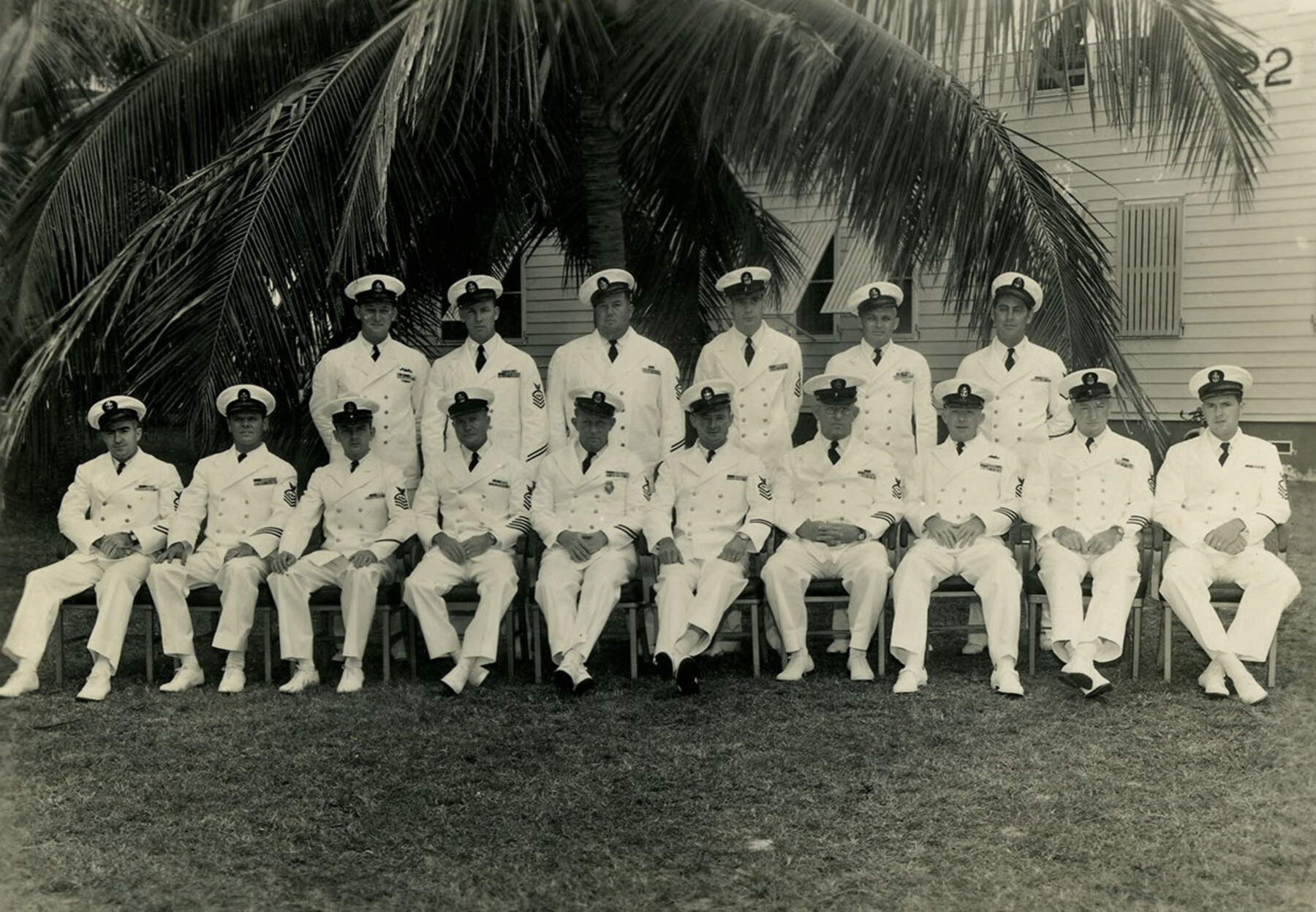
World War II affected the residents of WNC both home and abroad. This collection highlights some of these experiences, including Carr and Ruth Hooper who were interred at the Santo Tomas internment camp in Manila; Robert Venoy Reed, an army medic who was captured by German forces; and Samuel Owens, who was captured at the fall of Bataan on April 9, 1942 and remained a Japanese P.O.W. until the end of the war.
Carr Hooper was born in the Cowarts community of Jackson County, North Carolina and he received a degree from Western Carolina Teachers College in August 1931. Hooper met Ruth Williams of Fayetteville, Tennessee, while studying at the George Peabody College for Teachers in Nashville, Tennessee, and the couple married on August 20, 1931. In 1932, Carr Hooper accepted a position with the department of education in the Philippines where he taught English. After the beginning of war between the United States and Japan on December 7, 1941, the Philippine Islands were occupied by Japanese forces. In January 1942, the Hoopers were sent to the Santo Tomas internment camp in Manila and they remained there until February 1945. After liberation, the Hoopers returned to the United States. Carr Hooper returned to teaching in western North Carolina. In 1956, he accepted the position as principal at the Sylva High School and later, in 1960, at Sylva-Webster High School. He retired from the profession in 1969. The football stadium at Sylva-Webster High School, now Smoky Mountain High School, in Sylva, is named in his honor.
Robert Venoy Reed was born in Sylva, North Carolina on May 28, 1915. He graduated from Sylva High School in 1936 and worked as a sales clerk at the Sylva Pharmacy before joining the military in October of 1942. Reed enlisted as a private in the United States Army at Camp Croft, South Carolina, and trained as a medic for the army. Reed was captured by German forces on January 19, 1945, and was assigned to work with a German doctor caring for German civilians and American prisoners-of-war. At the time of his separation and honorable discharge from the U.S. Army on October 12th, 1945, Reed was a Technician, 4th grade, Medical Aidman. After being discharged from the Army, Reed returned to Sylva and resided there for the rest of their lives. Reed was awarded the Silver Star Medal for heroic action in Cherbourg, France.
Samuel Robert Owens Collection
Samuel Robert Owens was born April 10, 1918, in Glenville, NC, to Steven John Owens and Frances Elvira Alexander Owens, the ninth of eleven children. The Owens family relocated to Webster, NC, where Samuel Owens attended school at the Webster School. He was named salutatorian of the Class of 1936. Upon graduation, Owens enrolled in the U.S. Navy. Owens was stationed at Cavite Naval Yard in the Philippines when the United States entered World War II, following the December 7, 1941 attack on Pearl Harbor by Japan. He was a member of the crew of USS Canopus, a submarine tender attached to Submarine Squadron 20. The Canopus received direct bomb hits twice during her service, but remained actively involved in the defense of the Bataan peninsula until the fall of Bataan on April 9, 1942. The Canopus was scuttled by her crew on April 10, 1942. A detailed account of her role in the war in the Philippines, written by Captain E.L. Sackett, can be found in this collection. The majority of the crew of Canopus, including Samuel Robert Owens, were captured by the Japanese, and became prisoners of war. Owens was listed by the Navy as Missing in Action until word came of his P.O.W. status via a Red Cross list of P.O.W.'s some 13 months after his capture. He remained a P.O.W. until the end of the war, spending much of his time as a captive in the Japanese camp of Fukouaka. Owens received a Silver Star and a Bronze Star for his service. Owens remained in the Navy following the war until 1958. Upon his honorable discharge, he returned to his native Jackson County, NC, and enrolled in classes at Western Carolina College (later Western Carolina University), and graduated in 1961. He became a teacher, teaching math and science in western North Carolina and on the Qualla Boundary. He later worked in Walhalla, SC, before retiring in 1980. Samuel Robert Rickman Owens died on May 31, 1995.
Browse records (609)
-
Mary K. and Frances Elvira Owens to Samuel Robert Owens, August 1945

WCU - World War II in Southern... World War II in... World War II in Southern...
Mary K. and Frances Elvira Owens to Samuel Robert...
1945-08-28
-
Walter Franklin George to Mrs. Preetorius, June 17, 1942
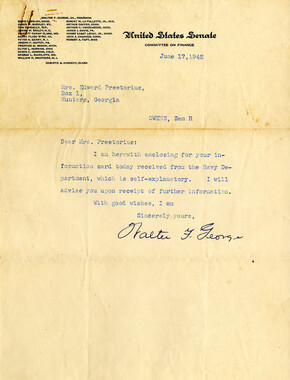
WCU - World War II in Southern... World War II in... World War II in Southern...
Walter Franklin George to Mrs. Preetorius, June...
1942-06-17
-
Account of the USS Canopus written by Capt. E. L. Sackett
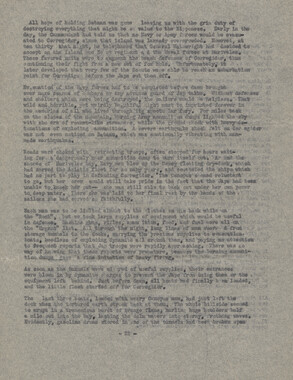
WCU - World War II in Southern... World War II in... World War II in Southern...
Account of the USS Canopus written by Capt. E. L....
-
F. E. Hope to Venoy Reed, September 2, 1942

WCU - World War II in Southern... World War II in... World War II in Southern...
F. E. Hope to Venoy Reed, September 2, 1942
1942-09-02
-
Shin Seiki: Bagong Araw. New Era

WCU - World War II in Southern... World War II in... World War II in Southern...
Shin Seiki: Bagong Araw. New Era
-
Elizabeth Hope to Venoy Reed, April 15, 1945
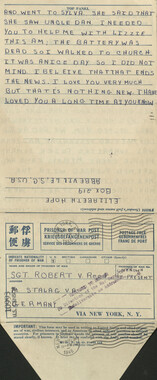
WCU - World War II in Southern... World War II in... World War II in Southern...
Elizabeth Hope to Venoy Reed, April 15, 1945
-
Memoirs of Ruth Hooper

WCU - World War II in Southern... World War II in... World War II in Southern...
Memoirs of Ruth Hooper
-
Notes between Venoy Reed and Elizabeth Reed

WCU - World War II in Southern... World War II in... World War II in Southern...
Notes between Venoy Reed and Elizabeth Reed
-
Shin Seiki: Bagong Araw. New Era
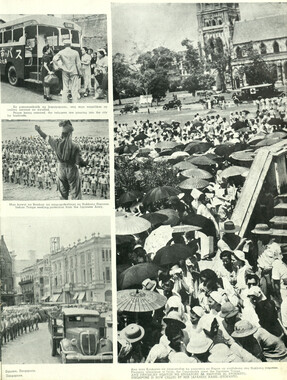
WCU - World War II in Southern... World War II in... World War II in Southern...
Shin Seiki: Bagong Araw. New Era
-
Residence Certificate B Ruth Williams Hooper

WCU - World War II in Southern... World War II in... World War II in Southern...
Residence Certificate B Ruth Williams Hooper
-
Liberation Bulletin of Philippine Internment Camp No. 1

WCU - World War II in Southern... World War II in... World War II in Southern...
Liberation Bulletin of Philippine Internment Camp...
-
Samuel Robert Owens to Mrs. Steven J. Owens, December 18, 1941
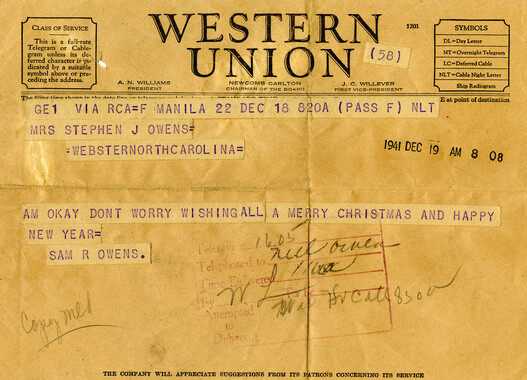
WCU - World War II in Southern... World War II in... World War II in Southern...
Samuel Robert Owens to Mrs. Steven J. Owens,...
1941-12-18
-
John Floyd Owens to Frances Elvira Owens, October 1943
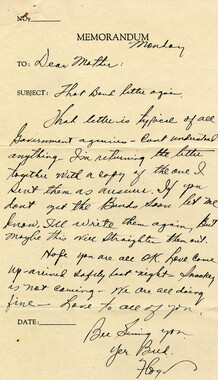
WCU - World War II in Southern... World War II in... World War II in Southern...
John Floyd Owens to Frances Elvira Owens, October...
1943-10
-
Hugh Peterson to Mrs. Edward L. Preetorius, June 13, 1942
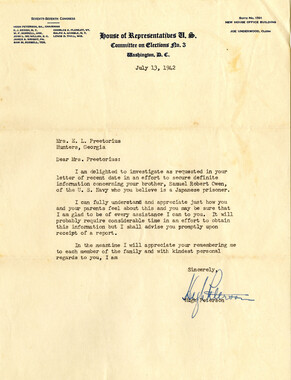
WCU - World War II in Southern... World War II in... World War II in Southern...
Hugh Peterson to Mrs. Edward L. Preetorius, June...
-
Shin Seiki: Bagong Araw. New Era
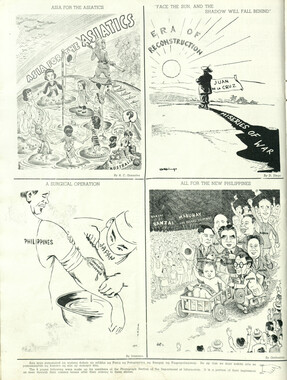
WCU - World War II in Southern... World War II in... World War II in Southern...
Shin Seiki: Bagong Araw. New Era
-
Camp 17, August 1980

WCU - World War II in Southern... World War II in... World War II in Southern...
Camp 17, August 1980
-
Separation qualification record and honorable discharge for Robert Venoy Reed, 1945-10-12;

WCU - World War II in Southern... World War II in... World War II in Southern...
Separation qualification record and honorable...
1945-10-12;
-
Account of the USS Canopus written by Capt. E. L. Sackett
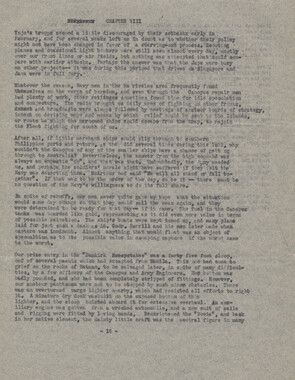
WCU - World War II in Southern... World War II in... World War II in Southern...
Account of the USS Canopus written by Capt. E. L....
-
The Canopus
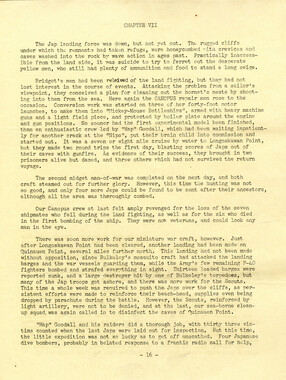
WCU - World War II in Southern... World War II in... World War II in Southern...
The Canopus
-
Account of the USS Canopus written by Capt. E. L. Sackett

WCU - World War II in Southern... World War II in... World War II in Southern...
Account of the USS Canopus written by Capt. E. L....